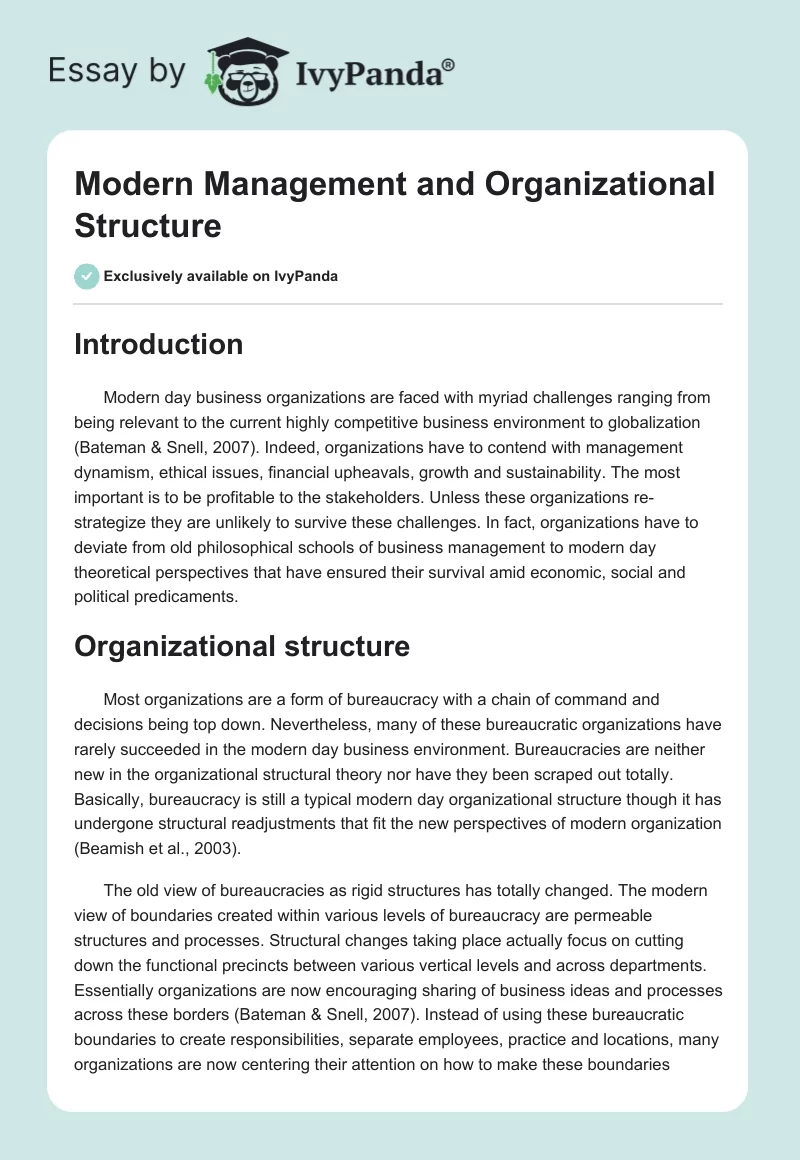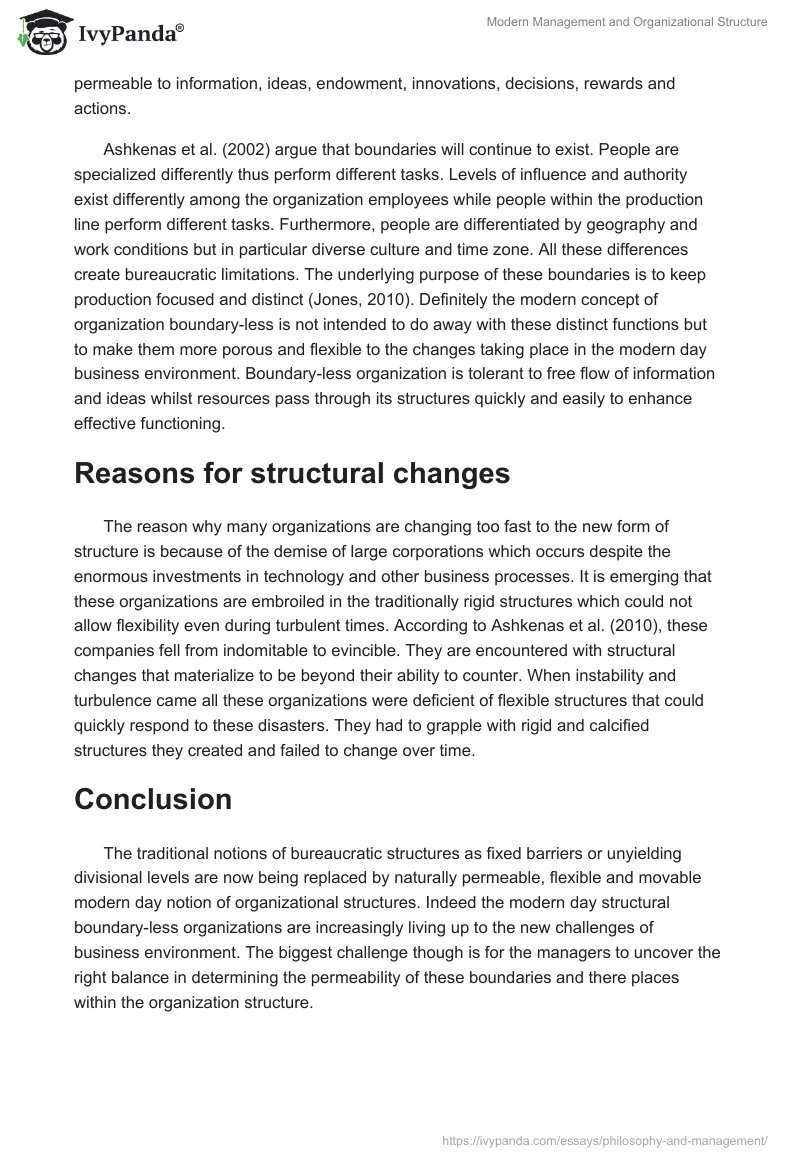Introduction
Modern day business organizations are faced with myriad challenges ranging from being relevant to the current highly competitive business environment to globalization (Bateman & Snell, 2007). Indeed, organizations have to contend with management dynamism, ethical issues, financial upheavals, growth and sustainability. The most important is to be profitable to the stakeholders. Unless these organizations re-strategize they are unlikely to survive these challenges. In fact, organizations have to deviate from old philosophical schools of business management to modern day theoretical perspectives that have ensured their survival amid economic, social and political predicaments.
Organizational structure
Most organizations are a form of bureaucracy with a chain of command and decisions being top down. Nevertheless, many of these bureaucratic organizations have rarely succeeded in the modern day business environment. Bureaucracies are neither new in the organizational structural theory nor have they been scraped out totally. Basically, bureaucracy is still a typical modern day organizational structure though it has undergone structural readjustments that fit the new perspectives of modern organization (Beamish et al., 2003).
The old view of bureaucracies as rigid structures has totally changed. The modern view of boundaries created within various levels of bureaucracy are permeable structures and processes. Structural changes taking place actually focus on cutting down the functional precincts between various vertical levels and across departments. Essentially organizations are now encouraging sharing of business ideas and processes across these borders (Bateman & Snell, 2007). Instead of using these bureaucratic boundaries to create responsibilities, separate employees, practice and locations, many organizations are now centering their attention on how to make these boundaries permeable to information, ideas, endowment, innovations, decisions, rewards and actions.
Ashkenas et al. (2002) argue that boundaries will continue to exist. People are specialized differently thus perform different tasks. Levels of influence and authority exist differently among the organization employees while people within the production line perform different tasks. Furthermore, people are differentiated by geography and work conditions but in particular diverse culture and time zone. All these differences create bureaucratic limitations. The underlying purpose of these boundaries is to keep production focused and distinct (Jones, 2010). Definitely the modern concept of organization boundary-less is not intended to do away with these distinct functions but to make them more porous and flexible to the changes taking place in the modern day business environment. Boundary-less organization is tolerant to free flow of information and ideas whilst resources pass through its structures quickly and easily to enhance effective functioning.
Reasons for structural changes
The reason why many organizations are changing too fast to the new form of structure is because of the demise of large corporations which occurs despite the enormous investments in technology and other business processes. It is emerging that these organizations are embroiled in the traditionally rigid structures which could not allow flexibility even during turbulent times. According to Ashkenas et al. (2010), these companies fell from indomitable to evincible. They are encountered with structural changes that materialize to be beyond their ability to counter. When instability and turbulence came all these organizations were deficient of flexible structures that could quickly respond to these disasters. They had to grapple with rigid and calcified structures they created and failed to change over time.
Conclusion
The traditional notions of bureaucratic structures as fixed barriers or unyielding divisional levels are now being replaced by naturally permeable, flexible and movable modern day notion of organizational structures. Indeed the modern day structural boundary-less organizations are increasingly living up to the new challenges of business environment. The biggest challenge though is for the managers to uncover the right balance in determining the permeability of these boundaries and there places within the organization structure.
References
- Ashkenas, R., Ulrich, D., Jick, T., & Kerr, S. (2002). The boundaryless organization: Breaking the chains of organizational structure. San Francisco, CA: Jossey-Bass.
- Bateman, T. S., & Snell, S. A. (2007). Management: Leading and collaborating in a competitive world. Boston, MA: McGraw-Hill/Irwin.
- Beamish, P., W., Morrison, A., Inkpen, A., & Rosenzweig, P. M. (2003). International management: Text and cases. Boston, MA: McGraw-Hill/Irwin.
- Jones, G. R. (2010). Organizational theory, design, and change. Upper Saddle River, NJ: Pearson/Prentice Hall.


